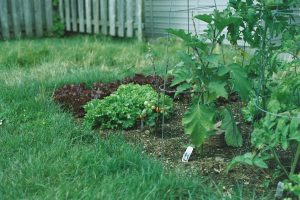
Potash in Orchards: Preparing Trees for Winter Dormancy
Orchards are long-term investments. Whether you manage apples, pears, peaches, plums, or cherries, the productivity and profitability of fruit trees depend on how well they

As gardening enthusiasts and professional growers alike gear up for the spring growing season, few issues cause more frustration than discovering dark, sunken lesions at the blossom end of otherwise healthy-looking tomatoes and peppers. This common physiological disorder is known as blossom end rot (BER) and is directly linked to a calcium deficiency in the fruit — not necessarily due to a lack of calcium in the soil, but often because of inconsistent calcium uptake.
One of the most effective ways to address and prevent this issue is by using a specialized fertilizer like 15.5-0-0 calcium nitrate, which supplies both calcium and readily available nitrogen in the form of nitrate nitrogen. This blog dives deep into how 15.5-0-0 calcium nitrate works, when and how to apply it, and why it is essential for high-quality fruit production in tomatoes and peppers.
Before diving into the solution, it’s essential to understand what causes blossom end rot:
Calcium nitrate (Ca(NO₃)₂) is a water-soluble fertilizer containing:
This combination makes it ideal for rapid nutrient delivery and correcting calcium-related disorders. Unlike ammonium-based fertilizers, nitrate nitrogen does not compete with calcium, which means both nutrients can be absorbed effectively by the plant.
The most obvious benefit of calcium nitrate is its ability to prevent and correct calcium deficiencies that lead to blossom end rot. Applying it during key stages of fruit development ensures calcium reaches the fruit when it is needed most.
Nitrogen is essential for vegetative growth, but not all forms of nitrogen are equal. The nitrate form in 15.5-0-0 allows for immediate uptake by roots, promoting balanced growth without interfering with calcium transport.
Calcium strengthens plant cell walls, which results in firmer fruits that store longer and ship better. This is crucial for both home growers and commercial producers.
Proper calcium levels help regulate plant stress responses, including temperature fluctuations and drought conditions — both of which are common in spring and summer.
Beyond preventing disorders, calcium nitrate supports healthy root systems and shoot elongation, setting the foundation for strong flowering and fruiting later on.
To prevent blossom end rot and optimize plant health, timing your calcium nitrate applications is key:
Mix into the soil before transplanting young tomato or pepper seedlings to boost calcium levels.
Apply 15.5-0-0 calcium nitrate about 2–3 weeks after transplanting, once plants are established and have begun vegetative growth.
This is a critical stage for calcium uptake. Apply again as flower buds begin to form.
Continue applications through the early fruit development stage, when calcium demand spikes.
Periodic feeding every 2–3 weeks throughout the growing season helps maintain consistent calcium and nitrogen levels.
Note: Foliar sprays can help but are not a substitute for root uptake. Use in combination with soil feeding for best results.
15.5-0-0 calcium nitrate is relatively safe when applied at recommended rates, but overuse can lead to:
To mitigate risks:
Blossom end rot can devastate your tomato and pepper crops — but it doesn’t have to. By incorporating 15.5-0-0 calcium nitrate into your fertilization routine, you can ensure your plants receive the calcium they need at the right time.
This simple yet powerful fertilizer not only prevents disorders but also promotes stronger fruit set, improved plant resilience, and higher yields throughout the growing season.
For premium-quality calcium nitrate and expert product recommendations tailored to your soil needs, visit Supply Solutions LLC.
Need assistance with choosing the right fertilizer for your garden?
Let Supply Solutions LLC help you grow healthier, more productive tomato and pepper plants this season.

Orchards are long-term investments. Whether you manage apples, pears, peaches, plums, or cherries, the productivity and profitability of fruit trees depend on how well they
Every successful vegetable garden begins with healthy soil. Fertile soil is not only about nutrients but also about structure, drainage, and the ability to support
Give us a call or visit our store, and we’ll help you find the right solution for your business.
© Supply Solutions LLC 2025